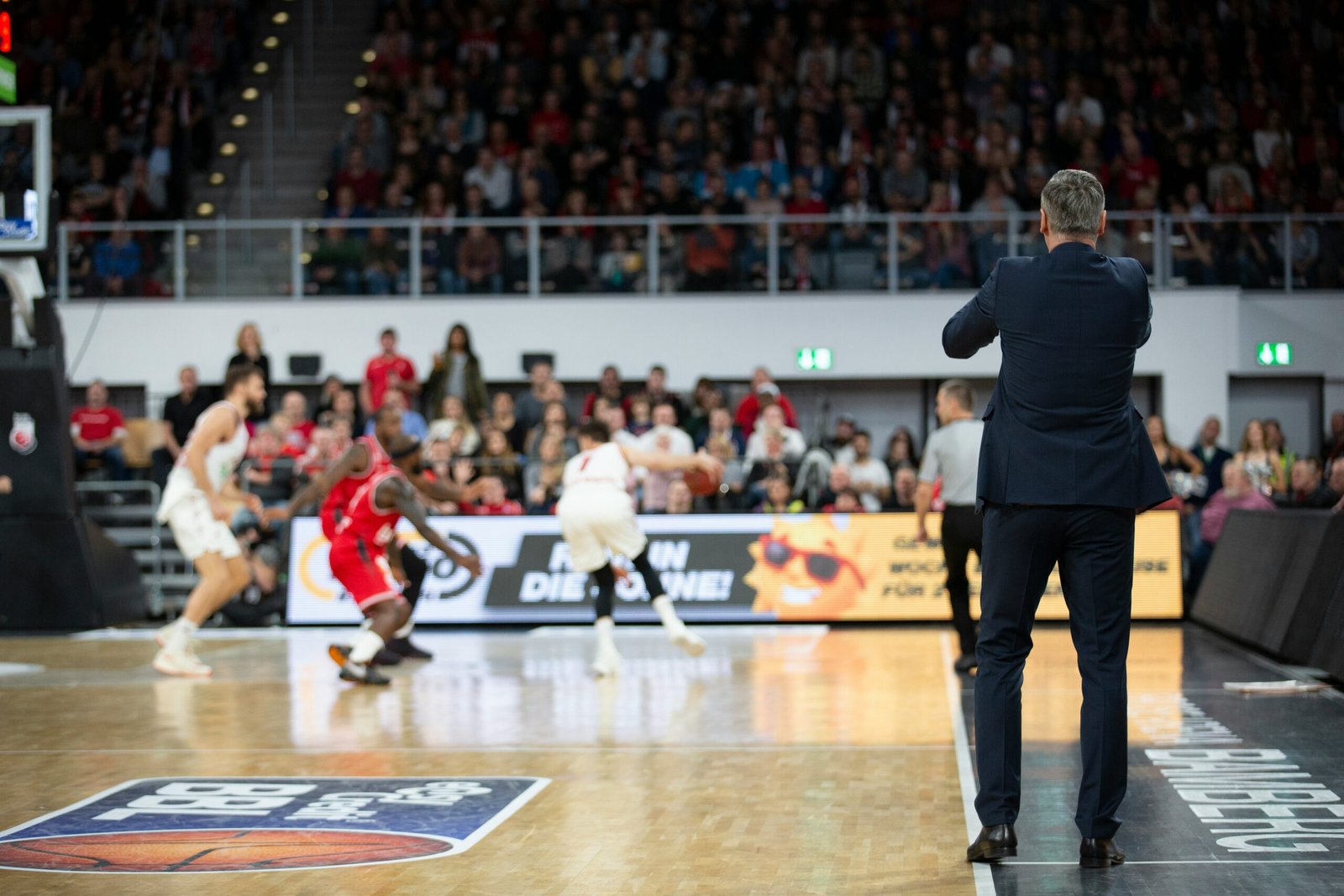Introduction
The upcoming matchup between the Orlando Magic and the Cleveland Cavaliers is poised to be a significant event in the current NBA season. As both teams gear up to face each other, the context surrounding this game adds to its importance. The Orlando Magic, known for their youthful energy and evolving roster, will be looking to harness their potential, while the Cleveland Cavaliers, with their more established core, aim to demonstrate their competitiveness in a tight playoff race.
Historically, the Orlando Magic and Cleveland Cavaliers have faced each other on numerous occasions, with both teams enjoying periods of success. In recent matchups, the player stats have illustrated the contrasting styles: the Magic often rely on a fast-paced offense fueled by their younger players, whereas the Cavaliers typically implement a more structured approach, emphasizing defensive strategies and experienced gameplay. This season has brought both teams significant challenges, making their performance in this match especially crucial as they vie for favorable standings.
The significance of the Orlando Magic vs. Cleveland Cavaliers match lies not only in the immediate outcomes but also in what the game means for the broader scope of the NBA season. Analysts and fans alike will be keenly observing individual player stats and team dynamics, as each player’s contributions could potentially sway the contest’s result. Expectations are high as both teams strive to secure vital victories that could influence their playoff positions. Therefore, a thorough analysis of the player stats in this matchup will provide insights into each team’s strategy and highlight the areas where they need to improve moving forward.
Overview of the Game
The matchup between the Orlando Magic and the Cleveland Cavaliers showcased an intense battle between two competitive teams. The game, held at the Amway Center, attracted considerable attention not only due to the teams’ performances but also because of the player stats that emerged post-game. The final score, a well-fought contest ending 112-105 in favor of the Cavaliers, reflects the back-and-forth nature of the game and the significant shifts in momentum experienced throughout the four quarters.
The first quarter started energetically, with both teams exchanging leads. The Orlando Magic capitalized on their home-court advantage early on, leveraging their defensive strategies to build a small lead. However, the Cavaliers quickly responded, thanks to outstanding contributions from their star players, who displayed sharp shooting and remarkable playmaking abilities. Notably, a crucial three-pointer from Cavaliers’ guard midway through the first stirred excitement among fans, signaling the start of a dynamic match.
As the game progressed into the second quarter, the Cavaliers began to assert their dominance. A notable sequence occurred when the Cavaliers executed a swift fast-break that resulted in a dunk, momentarily shifting the momentum in their favor. The Magic struggled to contain the Cavaliers’ scoring spree, leading to a surge in their foul count. Despite this setback, the Magic’s resilience came to light towards the end of the half, as they managed to reduce the deficit to just two points.
The third quarter saw the teams trading baskets, with significant contributions from both benches. However, it was the Cavaliers who seized control in the fourth quarter, demonstrating a disciplined approach that emphasized ball movement and effective spacing. The Magic, on the other hand, found themselves rushing shots under pressure, which ultimately impacted their offensive efficiency. This strategic contrast showcased the evolution of gameplay and player stats, underscoring the impact of tactical decisions as the game reached its climax.
Key Player Performances
In the recent matchup between the Orlando Magic and the Cleveland Cavaliers, the performances of key players played a significant role in determining the outcome. Darius Garland emerged as one of the standout performers, showcasing his scoring ability and adept playmaking skills. Garland’s contributions were vital, particularly with his impressive tally of 28 points and 9 assists. His ability to create opportunities for his teammates, combined with his scoring prowess, enabled the Cavaliers to maintain pressure on the Magic throughout the game. His deft ball-handling and strategic movement allowed him to navigate through the Magic’s defense effectively, facilitating both fast-break points and half-court offense.
Conversely, Paolo Banchero delivered a commendable performance for the Orlando Magic, further solidifying his reputation as a burgeoning star in the league. With a solid output of 24 points and 12 rebounds, Banchero not only showcased his scoring ability but also highlighted his significance in securing rebounds, which are critical for transitioning from defense to offense. His versatility on the court provided the Magic with essential scoring options and disrupted the Cavaliers’ defensive plans. Banchero’s resilience and skill in the paint contributed to the flow of the Magic’s gameplay, allowing them to put forth a competitive effort against the Cavaliers.
The clash of these talented players, Garland and Banchero, exemplified the significance of individual performances in a team context. While Garland’s scoring and playmaking led the Cavaliers to victory, Banchero’s all-around contributions reaffirmed his role as a cornerstone for the Magic. The orlando magic vs cleveland cavaliers match player stats clearly reflected the impact each of these athletes had on the overall game dynamics, making their performances memorable and pivotal as the season progresses.
Statistical Breakdown
The recent encounter between the Orlando Magic and the Cleveland Cavaliers provided a wealth of statistical data that can shed light on both teams’ performances. Examining individual player stats is crucial to understanding how these figures influenced the game’s dynamics and ultimate outcome. For the Orlando Magic, key players exhibited impressive numbers. For instance, the star guard scored 28 points with a shooting accuracy of 48% from the field. Additionally, he contributed 5 assists and pulled down 7 rebounds, establishing himself as a multifaceted threat on the court. His performance was pivotal in maintaining offensive pressure against the Cavaliers.
On the other hand, the Cleveland Cavaliers showcased a balanced attack with multiple contributors stepping up. The leading scorer for the Cavaliers managed to tally 30 points, demonstrating remarkable efficiency with a 50% shooting rate, including a noteworthy 40% from three-point range. Moreover, he recorded 6 assists and collected 4 rebounds, indicating his well-rounded skill set. Turnover rates were crucial for both teams, as the Cavaliers maintained a relatively low turnover count of 12, while the Magic struggled with 16 turnovers, which ultimately hindered their offensive rhythm.
Three-point shooting percentages proved to be a critical factor in this match, with the Magic shooting at 34% compared to the Cavaliers’ impressive 42%. This disparity in three-point success created significant scoring opportunities for Cleveland, giving them an edge. In reviewing the orlando magic vs cleveland cavaliers match player stats, the contrasts are stark. The ability to minimize turnovers, coupled with efficient shooting, significantly impacted the final score, highlighting the importance of these statistics in competitive basketball.
Three-Point Shooting Analysis
In the recent encounter between the Orlando Magic and the Cleveland Cavaliers, three-point shooting played a significant role in shaping the outcome of the game. Both teams exhibited varying degrees of efficiency, which ultimately influenced their scoring strategies and overall performance. The Orlando Magic relied heavily on their perimeter shooters, focusing on a high volume of three-point attempts to exploit Cleveland’s defensive weaknesses.
During the match, the Magic showcased some of their key shooters, including Franz Wagner and Cole Anthony. Wagner demonstrated impressive shooting form, finishing with a three-point shooting percentage of 45%, contributing significantly to the team’s offensive production. Cole Anthony also stepped up, making several clutch shots from beyond the arc and closing the game with a 40% shooting clip. This proficiency from three-point range provided the Magic with a critical edge, allowing them to create scoring opportunities and maintain a lead during vital moments of the match.
On the other hand, the Cleveland Cavaliers struggled to find their rhythm from the three-point line. Despite having capable shooters like Donovan Mitchell and Darius Garland, the team managed a subpar shooting percentage of 32%. Mitchell, while potent in driving to the basket, was unable to capitalize on open three-point attempts, shooting only 25% from deep. Garland’s performance did not improve matters, as he consistently missed key shots, reducing the Cavaliers’ ability to keep pace with the Magic.
The strategic decisions made by both coaches reflected an emphasis on three-point shooting. The Magic’s game plan revolved around spreading the floor and utilizing pick-and-roll sequences to generate open looks from distance. Conversely, the Cavaliers needed to adjust their strategy in light of their shooting inefficiencies, primarily focusing on driving to the basket and creating opportunities for easier shots. The contrasting outcomes in three-point shooting efficiency underscored its critical impact on the final score of the Orlando Magic vs. Cleveland Cavaliers match, emphasizing its importance in today’s game strategies.
Rebounding and Defensive Contributions
The rebounding battle between the Orlando Magic and Cleveland Cavaliers is a crucial aspect of their matchup, having significant implications on possession and overall game pace. Rebounds serve not only to reclaim possession but also to dictate subsequent offensive strategies and defensive setups. The focus often centers on standout players like Paolo Banchero; however, contributions from other players can be equally pivotal in determining the outcome of the game.
In the recent clash, the Orlando Magic showcased a commendable effort in both offensive and defensive rebounds. Mo Bamba’s towering presence in the paint allowed him to secure vital defensive rebounds, often stifling any second-chance opportunities for the Cavaliers. This stifling defense not only prevented easy baskets but also allowed the Magic to initiate fast-break opportunities, creating a quicker pace of play. Similarly, Wendell Carter Jr. emerged as a key player, contributing significantly to the team’s rebounding efforts. His ability to box out opponents and secure offensive rebounds ensured that the Magic had multiple chances to score, which is critical during tightly contested games.
On the other hand, the Cavaliers, led by Jarrett Allen, put forth a strong challenge in the paint. Allen’s athleticism and timing made him a formidable rebounder, especially on the defensive end where he aimed to curtail the Magic’s efforts. Additionally, Evan Mobley demonstrated his versatility by contributing to the rebounding statistics while also positioning himself for fast breaks. The combination of Allen’s and Mobley’s efforts solidified the Cavaliers’ defensive stance and contributed to their ability to transition effectively after securing the ball.
Ultimately, the rebounding statistics from the Orlando Magic vs. Cleveland Cavaliers match indicated how vital timely rebounds are for controlling the flow of the game, affecting both teams’ strategies in a nuanced way. The analysis of these contributions underscores the importance of a collective team effort rather than relying exclusively on star players.
Pivotal Moments and Strategic Plays
The match between the Orlando Magic and the Cleveland Cavaliers served as a showcase of critical moments and strategic maneuvers that shaped the outcome. Early in the first quarter, the Cavaliers executed a well-coordinated play that led to an open three-point shot, establishing a strong lead that put immediate pressure on the Magic. This successful attempt not only boosted the confidence of the Cavaliers but also forced the Magic to reconsider their defensive strategy.
As the game progressed, the Magic rallied back, capitalizing on a pivotal turnover by the Cavaliers. This moment allowed them to mount a quick offensive counterattack that highlighted their speed and agility. The Magic’s transition game was executed flawlessly, displaying their adaptability under pressure, which is essential in the context of the ongoing Orlando Magic vs. Cleveland Cavaliers match player stats. The crowd’s engagement heightened as the Magic pulled within striking distance, showcasing how momentum can shift rapidly in basketball.
Another significant moment emerged in the third quarter when the Cavaliers opted for a shift in their defensive tactics, transitioning to a zone defense. This strategic move was pivotal in neutralizing the scoring capabilities of the Magic’s star player, who had been central to their offensive strategy up to that point. The Cavaliers’ coach demonstrated keen awareness of the game dynamics, recognizing the need for a more robust defensive structure to maintain their advantage.
Ultimately, both teams showcased their tactical acumen, with the Magic’s resilience and the Cavaliers’ adjustments playing crucial roles in the match’s narrative. Factors such as player rotations and timeouts also contributed to the fluidity of the game, illustrating how strategic decisions can have lasting impacts on outcomes. Monitoring the Orlando Magic vs. Cleveland Cavaliers match player stats will reveal how these pivotal moments resonated throughout the contest, highlighting the nuances of competitive basketball.
Impact on Team Standings and Future Prospects
The recent Orlando Magic vs. Cleveland Cavaliers match has significant implications for both teams regarding their standings in the NBA and future prospects. Following the game, the results impacted the win-loss records for both squads, thereby influencing their placement within their respective conferences. This analysis focuses not only on where the teams stand currently but also on how their performances suggest potential paths during the current NBA season.
For the Orlando Magic, the game displayed a combination of strong individual performances and areas requiring attention. Player stats from the match revealed notable contributions from key players, emphasizing the team’s offensive tactics and defensive strategies. As they navigate through the season, maintaining consistency will be crucial for the Magic to improve their standing. If they can address their weaknesses observed in the match, specifically in areas like rebounding and defensive rotation, they may enhance their prospects for securing a playoff spot.
Conversely, the Cleveland Cavaliers showcased resilience during their matchup with the Magic. Analyzing the Cavaliers’ player stats from the game indicates a solid team effort, with successful execution of plays that highlighted their depth. However, the fluctuating performance levels suggest the need for ongoing assessment and adjustment. Positioning for a playoff run will depend on their ability to capitalize on the strengths exhibited in this match while simultaneously addressing late-game execution challenges that could hinder their chances in tight contests.
Overall, both teams are at pivotal moments in the season. The Orlando Magic must leverage their individual talents to work collectively to elevate their standing, while the Cleveland Cavaliers are tasked with fostering consistency to assert themselves as playoff contenders. By analyzing the player stats and performances from their latest encounter, both teams can identify strengths and weaknesses pivotal for their futures.
Conclusion
The recent matchup between the Orlando Magic and the Cleveland Cavaliers provided several insights into player performances and team dynamics that could influence their trajectories as the season unfolds. The game highlighted key players whose contributions were pivotal in shaping the outcome, thus defining the current state of both franchises.
For the Orlando Magic, standout performances from their leading scorers laid a strong foundation for their offensive strategy. Players capitalizing on scoring opportunities demonstrated agility and precision, marking them as crucial assets in future games. Furthermore, the defensive tactics employed showcased their capability to adapt and overcome challenges posed by formidable opponents like the Cavaliers. The Orlando Magic’s resilience in face of setbacks during the match is a testament to their growing cohesion as a unit, providing momentum as they aim for playoff contention.
Conversely, the Cleveland Cavaliers exhibited moments of brilliance that underscored their potential despite the loss. Player stats revealed their ability to maintain pressure on the Magic throughout the game, with significant contributions coming from their star players. Notably, their defensive efforts were commendable, although a few lapses allowed the Magic to exploit scoring opportunities at critical junctures. The Cavaliers need to focus on consistency and capitalizing on their strengths while addressing areas that fell short in this match.
As both teams maneuver through the remainder of the season, the narratives surrounding them will evolve based on such performances. Tracking the impact of the Orlando Magic vs. Cleveland Cavaliers match player stats will be vital for fans and analysts alike, as it provides a clearer perspective on each team’s progression and potential going forward. Engaging with these storylines will enhance our understanding of the competitive landscape in the NBA as it continues to develop.
















